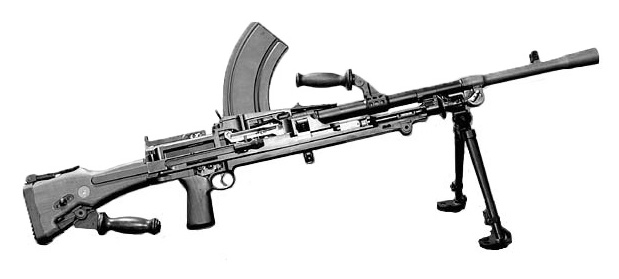Worl Best GUN Of Pakistan ( G3 )
HK G3A3
The G3 (which stands for “Gewehr 3″ = “Rifle #3″) is a family of select fire assault rifles manufactured by Heckler & Koch. It was adopted as the standard service rifle by the Bundeswehr in 1959, as well as several other countries to varying degrees. The G3 was chambered for the 7.62 × 51 mm NATO cartridge.
History

In the end of WWII engineers at Mauser Werke had been developing a selective fire assault rifle known as the StG.45(M) — (M = Mauser and 45 indicated the year 1945, the year production was intended to start). Only a few prototypes were available by then, and serious development did not continue until about 1950. In 1950 the Spanish Army made a requirement for a modern rifle with selective fire capabilites.

Development began at the “Centro de Estudios Tecnicos de Materiales Especiales” (CETME). CETME consisted of an assembled team of Spanish and German weapon designers. Amongst them Ludwig Vorgrimmler — generally recognized as the inventor of the delayed roller locking system. The breech mechanism of the StG.45 (M) was used as the basis for the new design and prototypes of the new rifle were available for firing by 1952.

In 1954, the 7.62mm x 51 cartridge was accepted as the new NATO standard. Both the CETME and other rifles such as the FN FAL was altered to accept the new cartridge. When Germany intended to adopt a new Assault Rifle they preferred the FN FAL and adopted it in 1956 under the designation G1. The Germans tried to buy the rights for license manufacturing but FN Herstal rejected the deal. Instead they turned to Heckler & Koch (through the Dutch NWM) that had initiated a cooperation with CETME. After about five years of further development, the West German Army adopted the new rifle in 1959 and gave it its new name — Gewehr 3 (G3).

Copies of the G3 issued to soldiers/guards in West Berlin (during the cold war) were stamped with MAS to avoid infringing agreement with the Soviet Union.

The G3 is today regarded as the “grandfather” of many famous following weapon systems such as the HK PSG1 and the HK MP5.
Description and Specifications
The G3 is built using as many stamped parts as possible. The receiver is stamped from sheet steel. The trigger unit housing along with pistol handle frame, also are stamped from steel and hinged to the receiver using the cross-pin in the front of the trigger unit, just behind the magazine housing. Earliest G3 rifles also featured stamped handguards and CETME-type flip-up rear diopter sights.
In the mid-1960s the initial design was upgraded to the G3A3 and G3A4 configurations. These rifles had ventilated plastic handguards and a drum-type rear diopter sights, marked from 100 to 400 meters. The G3A3 was a fixed butt version, with buttstock made from plastic, and the G3A4 was a telescope butt version, with retractable metallic buttstock with rubber buttplate. Late German production G3A3 and G3A4 models were built using new trigger units, integral with restyled pistol grip and triggerguard, made from plastic.
The shortest version of the G3 was the G3KA4, similar to G3A4 but with shortened barrel. Every G3 rifle can be equipped with detachable bipods, claw-type detachable scope mounts. Long-barreled versions can be fitted with bayonet or used to launch rifle grenades from the barrel. Folding cocking handle is located on the special tube above the barrel, at the left side, and does not reciprocate when gun is fired. The safety / fire selector is located above the triggerguard on the left side of the trigger group housing and usually is marked “S-E-F” (safe “Sicher” - single shots “Einzelfeuer” - full auto “Feuerstoß”). Latest models could have selectors marked with colored icons.

- Caliber: 7.62 mm / .308 in
- Cartridge: 7.62 × 51 mm NATO
- Weight: 9.7 lb / 4.41 kg empty
- Effective range: 546 yd / 500 m
- In service: 1958 – 1997 (Germany) | 1958 – present (some other countries)































































